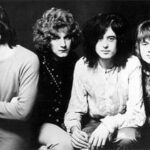Vladimir Nabokov wrote some of the greatest novels of the 20th century. Whether it be Lolita, The Gift, Pale Fire or one of his dozen or so lesser masterpieces, reading one of his books means spending hours, possibly days, in thrall to the merest whim of a perfect stranger. After finishing one (or perhaps several) of his novels, it’s only natural to want to learn more about the life of this man in whose intimate company so much time has been spent. But the lives of great writers inspire a great deal of interest, so the question becomes: which Nabokov biography is the best?
The logical place to start would be with Nabokov’s autobiography. First published as Conclusive Evidence in 1951, Speak, Memory: An Autobiography Revisited wasn’t published in its final form until 1966. In it, Nabokov writes about his childhood and early life in Russia and then of the time he spent living as a political refugee in London, Paris and Berlin after the Bolshevik Revolution. Artistically, Speak, Memory is every bit as successful as any of Nabokov’s novels. This can, in large part, be attributed to the fact that he approached the writing of his autobiography much as he approached any of his fictional endeavors. Some sections of the novel even appeared in magazines as fictional short stories.
Speak, Memory doesn’t faithfully recall all the people he has met and all the places he has been. As the title implies, it’s Nabokov’s memory of his life, rather than the truth of it, that is the focus here. Using his early formative experiences as source material, Nabokov provides a beautifully rendered distillation of the evolution of his artistic method. Speak, Memory is certainly, not only one of the finest works in Nabokov’s oeuvre, but one of the finest autobiographies of the 20th century.
But for a factual accounting of Nabokov’s life, one has to turn to the scholars. Andrew Field dedicated much of his life to the study of Nabokov. His first book Nabokov: His Life in Art (1967) was a literary analysis of Nabokov’s work up until that point. He spent the next several years working on what was to be the first authorized biography of the author, but when Nabokov saw the finished manuscript, he was horrified by what he felt were gross errors, baseless speculation and irresponsible insinuation on the part of Field. The publication of Nabokov: His Life in Part was delayed for several years because of legal wrangling between Field and Nabokov. It was finally published after the removal of passages Nabokov felt were libelous in 1977 just a few months after Nabokov’s death.
Since the dead cannot be libeled, Nabokov’s death cleared the way for VN: The Life and Art of Vladimir Nabokov (1986). Field’s third book on Nabokov is really just an amalgamation of his two previous books. It incorporates Field’s literary analysis of Nabokov’s work with his research into Nabokov’s biography and restores the contentious passages that had been excised from Nabokov: His Life in Part. After its publication, Dmitri Nabokov, the son and frequent translator of Vladimir, called it “an unscholarly, error-ridden, and viciously mendacious text” in a letter to the National Review.
It wasn’t until the early nineties that the biography that has come to be regarded as authoritative would be published. Though not officially an authorized biography, Brian Boyd was allowed access to Nabokov’s papers by Nabokov’s widow and son to aid in his research for the project. On its publication, it met with not only their approval but also the approval of Nabokov scholars around the world.
The first volume of Boyd’s two-volume set Vladimir Nabokov: The Russian Years (1990) covers roughly the same time period as Nabokov’s Speak, Memory. His childhood is documented and his early literary experiments explored. Boyd establishes Nabokov’s family’s place in the pre-revolutionary Russia and then covers in great detail his family’s flight from it and their subsequent wanderings around Europe. It’s during this time that Nabokov meets and marries his wife, Vera, and during this time that she gives birth to their first and only son. Everything one could want to know about the early Nabokov is covered here, with the relevant names, dates and addresses provided, right up until he and his family board the Champlain and set sail for America.
The second volume, Vladimir Nabokov: The American Years (1991) covers the rest of his life. Nabokov spent some time teaching literature at Wellesley where he gave his now famous lectures on the major 19th century Russian writers. He wrote several novels that were well regarded by the few who read them, and then he wrote one called Lolita that made him a household name and a very rich man. With the success of Lolita, he moved back to Europe where he remained for the rest of his life.
Unfortunately for those who’d like something a bit briefer than Boyd’s 1200 page, 2 volume set, there really isn’t a decent brief biography of Nabokov on the market yet, and Boyd’s is the best by such a far margin that to recommend any other would be irresponsible.



